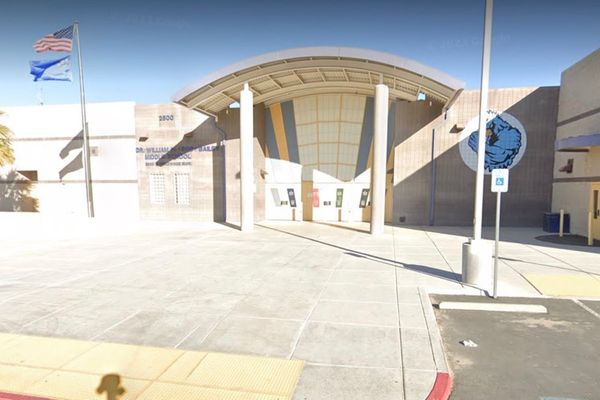
When Sarah* opens her banking app, she sees an account labelled Home Saver. After years of trying to save, there’s still $0 in it. The 30-year-old works as a nurse at a major hospital in Melbourne. She normally makes between $2,100 and $2,300 a fortnight. Her last pay transfer, because she got sick, was $1,900.
“I don’t think there are any nurses in my demographic – young, single people – who are like, ‘Yep, buying a house is a realistic dream,’” she says. “I don’t know many people who are buying. In fact, it’s just a lot of people [in] rental stress.”
Sarah is exactly the type of voter the major parties are trying to court with competing housing policies – a millennial who would love to secure the status of first home buyer.
Advocates wonder why the new commitments have targeted a small number of first home buyers over the larger number of lower-income people living in rental stress. And industry experts warn the situation has become so dire, they are only seeing Dinks (dual income, no kids) or people with inheritance make it on to the property ladder.
After paying for rent, groceries, petrol and bills, Sarah says she has hardly anything to put aside. Last year, she stopped living by herself and moved back into a share house to keep her rent down.
Labor has promised to lift the caps on the current federal scheme – allowing every first home buyer to secure a mortgage with a 5% deposit without paying lenders’ mortgage insurance (LMI) – and to build 100,000 homes across the country reserved for first home buyers.
The Coalition has said it will allow first home buyers who purchase new builds to deduct the interest from their repayments from their income tax, capped at the first $650,000 of the mortgage. They’ve also promised to unlock $50,000 of super to help with a deposit.
Sarah says neither plan would really help her.
She now rents 10 minutes away from the hospital, but this is a necessity, not a luxury – like many nurses, her shifts often finish at 10pm and start again at 7am.
“I’ve looked at the median house price around my area, for a two-bedroom apartment, and it’s $500,000. So 5% of that is $25,000,” she says. “It would take many, many years.”
Taking out super could help get her into the market earlier, but she worries it could impact on her livelihood in retirement – or even earlier, if she got sick and needed to access it sooner.
“It is a Band-Aid solution,” she says.
Natasha Janssens, a financial educator, says both policies would “boost demand” but neither addresses the key problem – “how overextended families are becoming in order to buy a home”.
“The Coalition policy is offering a cash benefit once you buy a home, the Labor policy is reducing the cost of entry,” Janssens says.
She says the tax deduction won’t help people struggling to see out the end of the year, while the 5% deposit passes on more risk to the homebuyer if the market dives.
“In both cases, politicians are asking young Australians to put themselves at risk … Whether that is by risking their income in retirement or by overextending themselves and purchasing with a small deposit.”
In the early 2000s, the average house price was four times the average income. Now, it’s more than eight. As prices have skyrocketed, saving has become even harder: it now takes more than 12 years for an average household to save a 20% deposit, up from six in the early 1990s.
Janssens says this means people often have to be coupled to get into the housing market.
Zena and her partner count themselves very lucky. They are Dinks – with a double income of about $250,000 and no kids. They know they are in a position many aren’t.
They want to buy an already-built home in Melbourne’s inner north, and so think Labor’s policy will get them in the door faster.
Because of their income, they are locked out of the existing scheme.
“If they [Labor] win the election, we would benefit from that,” she says. “Because I think we’ll be in a position to have more than a 10% deposit, but we probably won’t be able to get to 20%, so that means that we would be able to save on the LMI cost.
“If we’re looking at a house which costs $950,000, the LMI on [that] if we had a 10% deposit, would [depending on the lender] be like $16,000 or $17,000 added to the loan.”
She believes both parties should support the building of nicer apartments in cities, and focus on policies that help first home buyers, “compared to them being outbid by boomers who are investing”.
***
Melissa Gielnik, the managing director of Smart Lending Mortgage Brokers, says the biggest winners would be those who take advantage of the Coalition’s plan and buy a new build. “It’s almost like being an investor,” she says. “It’s tax-deductible interest.”
Gielnik says it will be a “massive combo” with the federal government’s current first home guarantee scheme, which wipes LMI and stamp duty to those with a 5% deposit under certain incomes. She thinks “it’s very positive for first-time buyers”, whoever gets in.
Still, some of those buyers aren’t convinced.
Louise Smith, 34, has been saving for a home for almost 20 years since she started working at the age of 15. She wants to buy in the next year.
Labor’s policy won’t help her further, because she already has the deposit to purchase in the area she wants. But the Coalition’s policy also doesn’t appeal, because she has a low income and it won’t help with the high mortgage repayments.
The main thing Smith wants to see is lower house prices. Last week she inspected a two-bedroom home in Reservoir, in Melbourne’s north, that needed substantial renovations, had no garden and bouncy floorboards. It had a price tag of almost $1m.
“What would actually help would be regulation to the housing market so that these absolutely exorbitant prices weren’t the norm,” she said. “It’s outrageous.”
The CEO of Homelessness Australia, Kate Colvin, wants everyone to look at the numbers. Over the year to 2024, there were 117,000 first home buyers, and more than half a million renters on commonwealth rent assistance who were paying more than 30% of their income in rent.
“We should really be talking about renters and homelessness,” she says. “We’ve got 280,000 people coming to homeless services every year, which is more than twice as many first home buyers.”
Colvin says “the lion’s share” of the housing crisis could be dealt with by building more social housing.
“If we got to the point where we had one in 10 properties that were social or affordable housing, then people like [Sarah] could be paying more affordable rent and saving for home ownership.
“It’s the policy solution to rule them all.”
While Labor has made inroads, with February figures showing 340 new social homes have been built and about 5,400 are under construction, “it needs to scale up”, Colvin says.
“We’re in the middle of a federal election, we’ve got to be aspiring to be a country that’s better than Australian families raising their children in tents.”
* Name has been changed for privacy







